Last month at The Surf Lodge, Brandon Boyd was tucked away in a room to paint. Venturing from Los Angeles to Montauk was his first trip back out into the world since December 2019, just weeks before the pandemic pressed us into lockdown. For the occasion, he was visiting the property for inspiration to create new works, which are now on view alongside others he co-created with the artist and Saturday Night Live actor Melissa Villaseñor and the renowned photographer Brian Bowen Smith.
From his stint upstairs, along Fort Pond, works emerged that mirrored his circumstances, emotions, and surroundings. Detailed line work dotted by washed of color filled the pages with swirls of open-ended emotion, guiding the eye from one curve to the next. For someone like Boyd, who’s notably known as the lead singer of the band Incubus, that’s something most audience members hear but don’t see.
As a musician, he may seem to most as a master of lyric and language, sound and tune, but he’s long since been expanding his vocabulary to communicate with more than just words. To the public’s surprise over the years, Boyd has been a practicing artist for as long as he’s been a musician, if not longer. Growing up in a household with creative parents, he was encouraged to draw, paint, and write what confused, surprised, or elated him. This act of expression through multi-faceted channels bled into his personal and professional lives, leading him to create emotionally intelligent songs and artworks that resonate with millions around the world.
Some of Boyd’s early works from his twenties and thirties were sketches and paintings in journals created while touring, which appeared in anthologies like White Fluffy Clouds in 2003, From the Murks of the Sultry Abyss in 2007, and So The Echo in 2013. Since, his practice has evolved and expanded around the globe as he’s exhibited works and connected with others that double as artists when they’re not on stage or on camera.
This led to Boyd’s latest arena, creating Moonlight Arts Collective during the pandemic. The platform brings together creatives that are known for their talents in the entertainment industry, yet on the side, “moonlight” as visual artists. So far, artists that have joined the organization—like Mark Mothersbaugh, Alia Shawkat, and Heart Evangelista—have backed Boyd’s mission to provide signed, limited-edition prints to the public at an approachable price point. Teeming with emotion, empathy, and understanding, Moonlight Arts Collective’s drawings, paintings, and photographs mirror the multitude of emotions we experience today.
In advance of Boyd’s fall Incubus tour and the release of a new EP, Whitewall spoke with the multi-hyphenate over the phone to hear how art encapsulates it all.
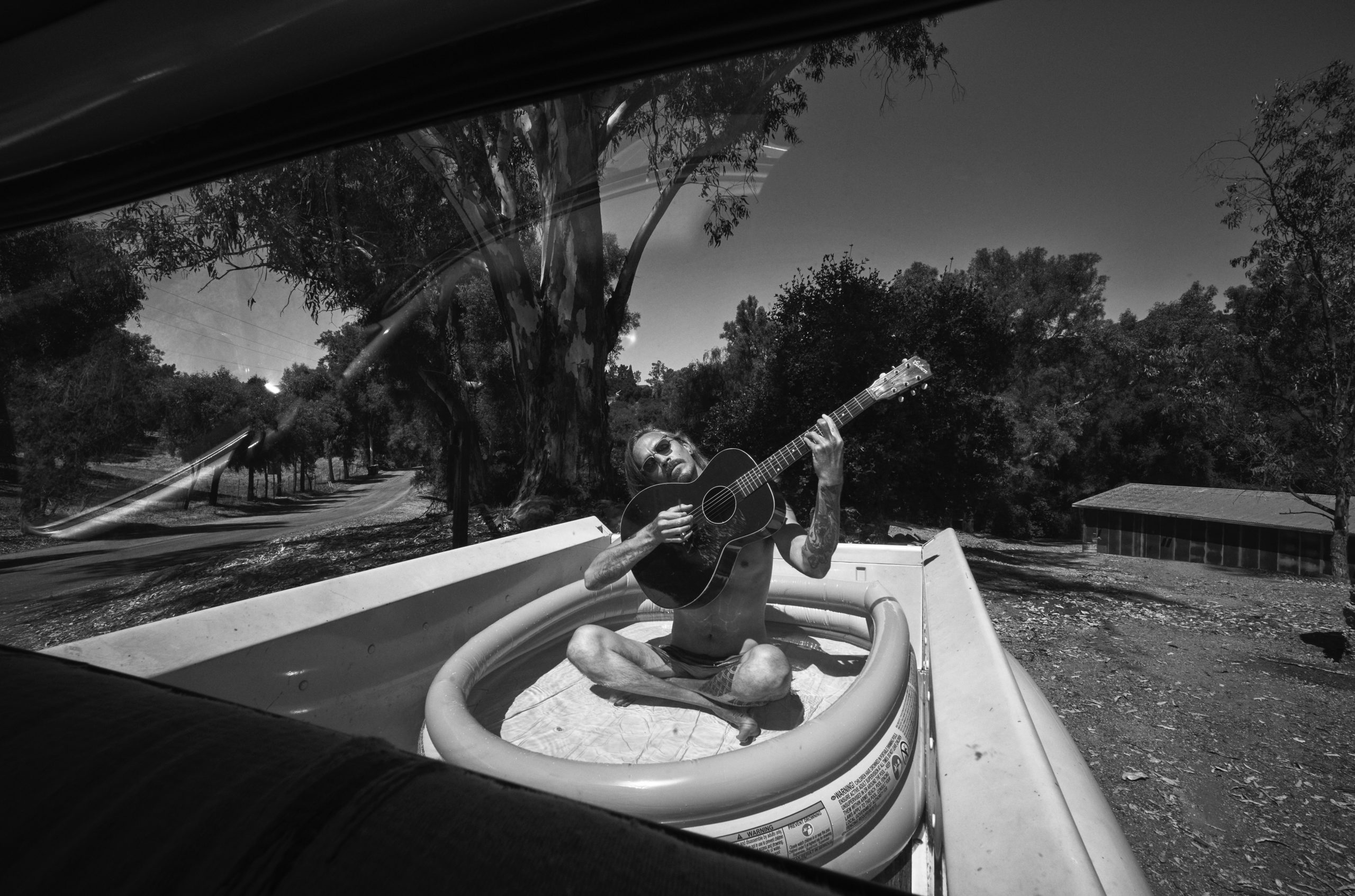
Photograph by Brian Bowen Smith, courtesy of Brandon Boyd and Moonlight Arts Collective.
WHITEWALL: Let’s take it back to the beginning. How did growing up in a creative household impact your ability to express yourself in various ways?
BRANDON BOYD: I grew up in a household that I suppose could be described as a creative household. Both of my parents were in the arts so to speak, in particular my mom. She was a singer and a painter, and she transitioned into writing later in life, which she still does now mostly for herself. There was an atmosphere that was permissive to creativity. There was never a struggle toward, “I’m going to draw today, I’m going to paint a picture, I’m going to bang on the piano.” There was always an open door, which I’m thankful for. It taught me from a very young age to express myself through multiple mediums.
I got interested in music—kind of obsessively as most of us do when we’re teenagers when we discover our favorite music, and we start to feel the magnetic influence of it. I very quickly thereafter started my own band that I’m still in today. But with drawing and painting, I’ve honestly been doing that for as long as I can remember. That was one thing my mom encouraged in me since I was a child. It’s been a part of my life that long. If I was having a hard time expressing myself, whether something was wrong or something was happening in my body, she would push a piece of paper at me with some crayons, and say, “Just draw it for me, okay?” [Laughs] I was sometimes able to communicate better that way. So, I figured out at a very young age that I was able to communicate some things more successfully through drawing. I did better in school when I was able to doodle and draw in notebooks and things like that.
I ended up doing very well in school because I think my teachers started to understand I listened better when I could have my hands in something. I started getting more interested in painting more seriously right after high school, when I was taking art in college, before I dropped out to go on tour with my band. So, I’ve been painting since then—about 27 years. What’s amazing about painting is that I don’t think that there is ever a true mastery of it. I don’t think there’s a place you can land and be like, “I’m done! I’m a ‘good’ painter.” It’s something to me that is a vast continuum. It keeps evolving if you allow it to. It keeps moving and pushing you in different directions, so I love it.
WW: And you’re using it as a tool to communicate how you’re feeling and what you’re going through. So, as you evolve, your works will evolve, too.
BB: Yeah, exactly. It’s so descriptive of any one moment in one’s life. Even if you’re stuck in your life, and you paint to express yourself, you’ll get a sense of stuckness. Or if you’re on the move, and things are moving really fast, you’ll feel those things in paintings. It’s always one of those things that I’ve always adored about the process of being visually creative. But also, being sonically creative with music is an incredible descriptor, as well, as to what’s going on in someone’s spiritual or emotional life.
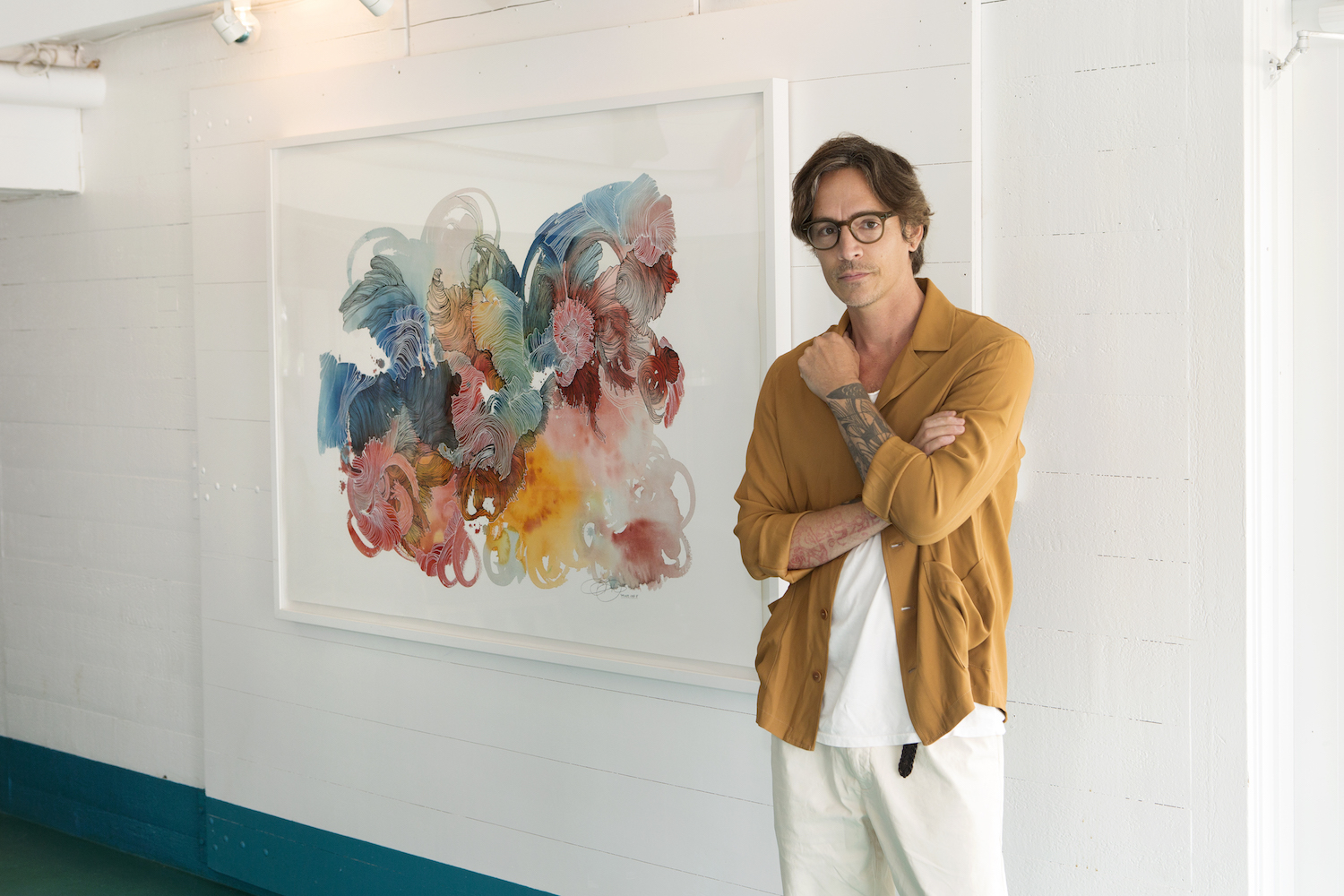
Courtesy of Brandon Boyd and Moonlight Arts Collective.
WW: You mentioned you’ve been painting while touring since your early twenties. Do the works change due to your circumstances, your feelings, or your environments?
BB: Yes. I always brought sketchbooks and a kit of sorts that consisted of pencils and design markers and graphic art pens. The first two books that I published—the first one was in 2003 called White Fluffy Clouds, the second was in 2007 called From the Murks of the Sultry Abyss—were both peeks into my sketchbooks of my twenties and early thirties while I was on tour. And then maybe eight or ten years ago, I started bringing watercolor acrylics kits with me, and some canvases and nicer paper with me on tour. I got to the point where we were sort of a traveling road case.
And yes, the paintings do change depending on where we were, the circumstances, the length of time we’ve been on tour. It’s really been fun to allow myself the opportunity to paint while I’m in different places and pick up different vibrations from those places. That’s what was fun about my weekend at The Surf Lodge. Under sunnier circumstances, I would have painted on that stage outside, but it was raining most of the time. So, I was up in my room, kind of operating the way I would if I was on tour, and I had the window open and was looking out onto the water and did two need paintings on canvas that are there on view now.
It’s this really fun idea to be almost like an artist in residence and paint the feeling of a place. While I was finishing the second painting, actually, I started to get this fun idea that, at some point in my life, traveling to a place with the intent of experiencing a place and the culture and the sights and the sounds and capturing it not only with felt experiences but through art. Paint in the place that you are, and do a series like that.
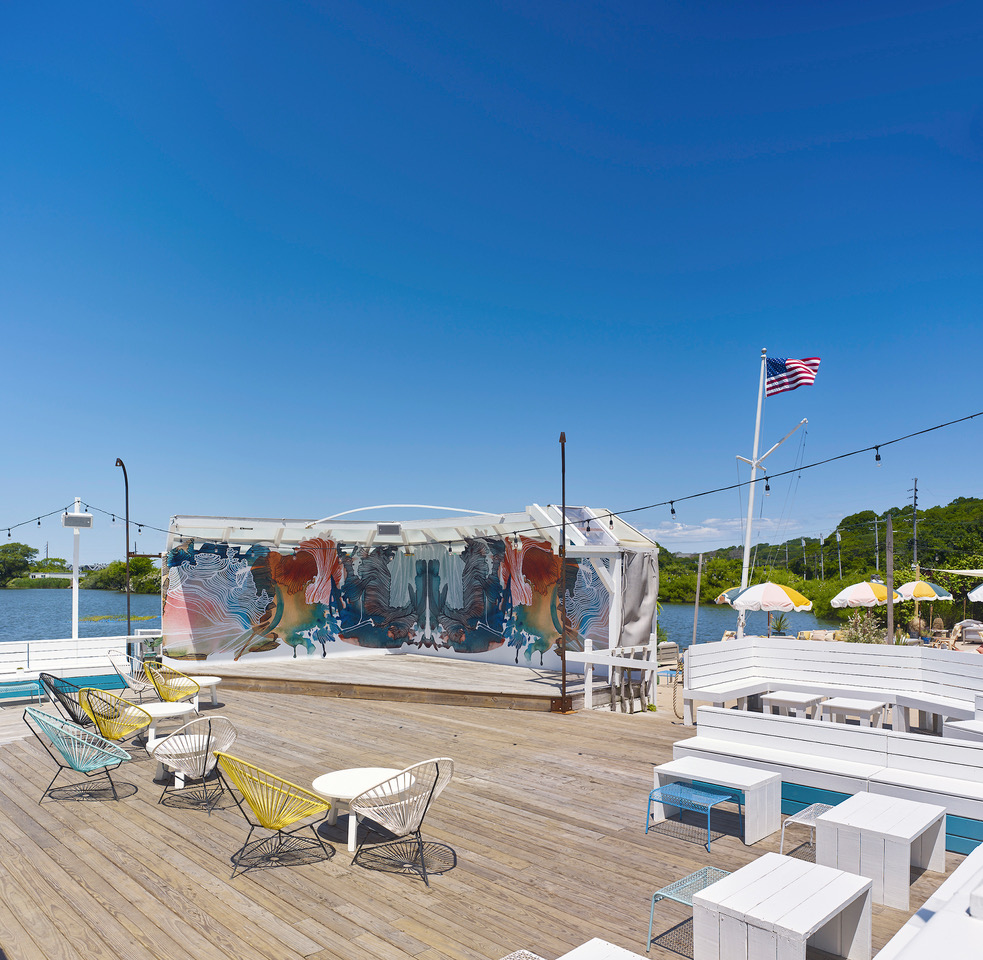
Courtesy of Brandon Boyd and Moonlight Arts Collective.
WW: How would you describe the works on view at The Surf Lodge?
BB: It’s mostly my work, but there are a handful of collaborative pieces that I did with two friends of mine. There are a few pieces that are in collaboration between myself and Melissa Villaseñor from the SNL cast. She has this really wonderful, illustrious style that, in my opinion, has almost a Shell Silverstein, childlike quality to it. Very pure and endearing. I hand embellished some of those, and there are prints of those on view. And one of my oldest friends, a well-known photographer named Brian Bowen Smith, over the years has photographed my girlfriend quite a few times and he printed four pieces of her in motion. She was a ballerina her entire life up until about four years ago, and is an amazing kinetic artist in the way that she knows how to move her body. He captured that and then I painted on top of a photograph, trying to continue to show the movement and color that spilled out of her when she dances. Those collaborative pieces were sort of a soft launch for Moonlight Arts Collective.
The pieces on view at The Surf Lodge are a handful of watercolor prints that are explosions of color and line work. And there are four or five new abstract paintings on canvas that I did that are mixed mediums—acrylic on canvas, oil pastel and oil graffiti makers; explosions of color and psychedelic movement. They happen to work really well in the environment of The Surf Lodge.
WW: Abstract works are so unique, too, because artists start and end in different ways and have such distinct processes. How would you describe your creative process when making abstract works?
BB: You’re so right about that. I don’t know what other artists’ processes are, and that’s one of the things that’s so fascinating to me about art and artists themselves. Everyone’s processes are a little bit or even drastically different. But then there are some very prominent throughlines in the way that we go about things. The way I’ve approached almost all of the visual art—and in writing music, it’s similar—it’s less about me walking into my creative space with a clear idea or intention about what I’m about to paint. It’s almost the opposite.
I walk into my studio or wherever I am, and I almost become enamored of the challenge of the blank canvas. There’s this inner drive that makes me know it’s time to start moving colors around. In that way, it’s a little like playing with uncertainty. I usually have no idea what I want to paint, I just know that I want to paint. I start moving color around and let something else inform the larger process and the movement. The awake part of me gets to do something else, and I’m letting my unconscious take over. My process is non-linear. It’s like I’m staring up into a cloudy sky and letting my eyes de-focus, and then all of a sudden, it’s like, “Oh, look! A bear.” Images start to arise, and I start to capture them at that point.
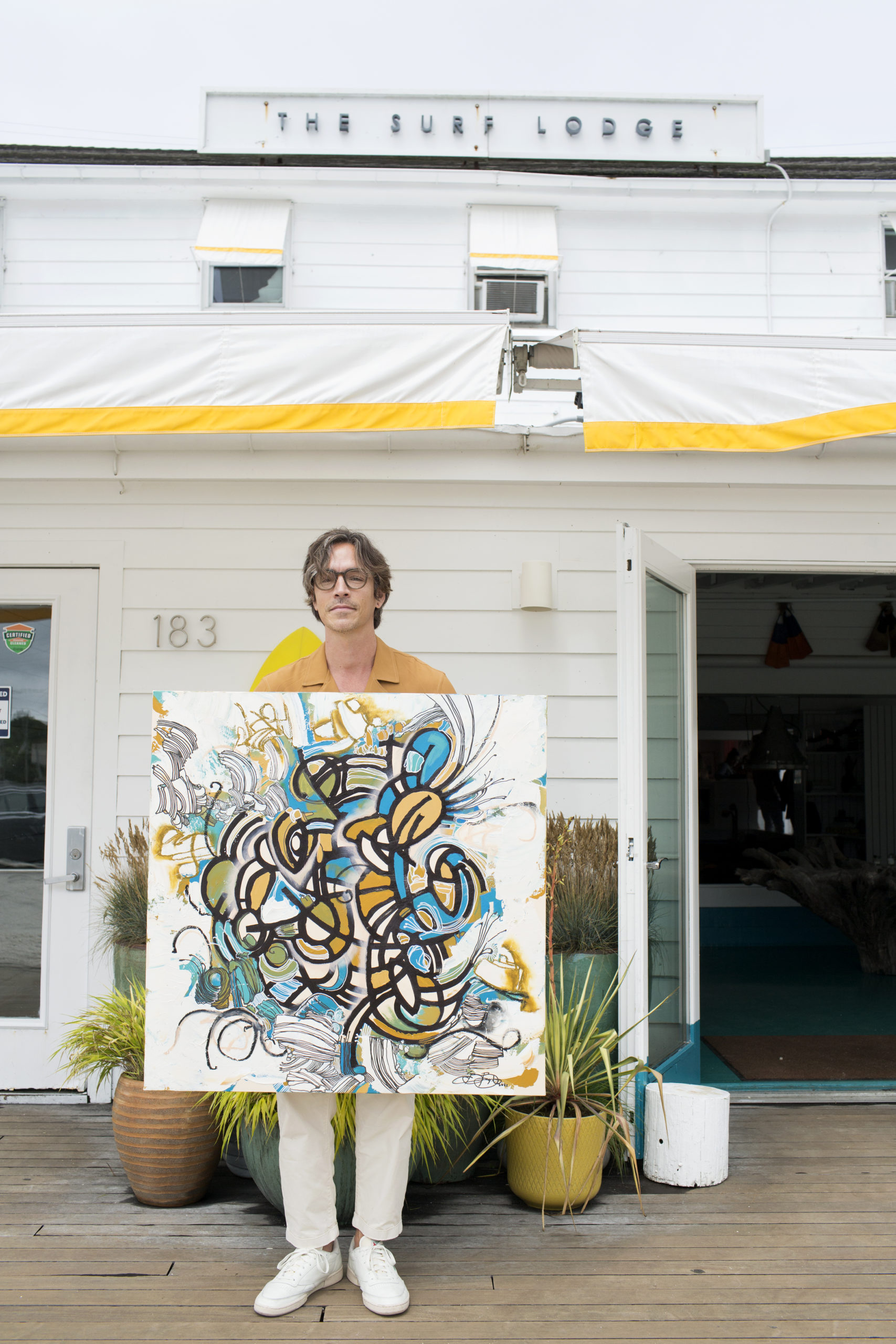
Courtesy of Brandon Boyd and Moonlight Arts Collective.
WW: You mentioned through lines between visual work and music. What do you feel you’re expressing most when you’re painting and creating music? Is it your circumstance, your surroundings, how you’re feeling, what you’re surprised or confused by?
BB: I think it’s all of those things, to be honest. Art in a general sense—acting as an umbrella with painting, music, film, and dance—is the opportunity to communicate things that are really difficult to communicate with mere words. I suppose this goes back to where we started. I learned from a very young age that I was able to transmit unspeakable things. Language is an incredibly powerful technology in that we can communicate so much back and forth, and learn so much from each other, that we can write down and see and say and story tell, but there is so much more happening beyond mere language.
Art has this opportunity to communicate deeper, unconscious areas—like dream time, unrequited feelings, aspects of love and confusion and chaos and elation that are almost impossible to fully grasp with mere words. I keep going back to the phrase “mere words,” not to diminish their importance or potential, but to express that in my experience in my life, words have been very useful but very limiting to me. Sometimes I’m able to communicate a lot more successfully if I can create it in a song or just show you with lines and color. Does that make sense?
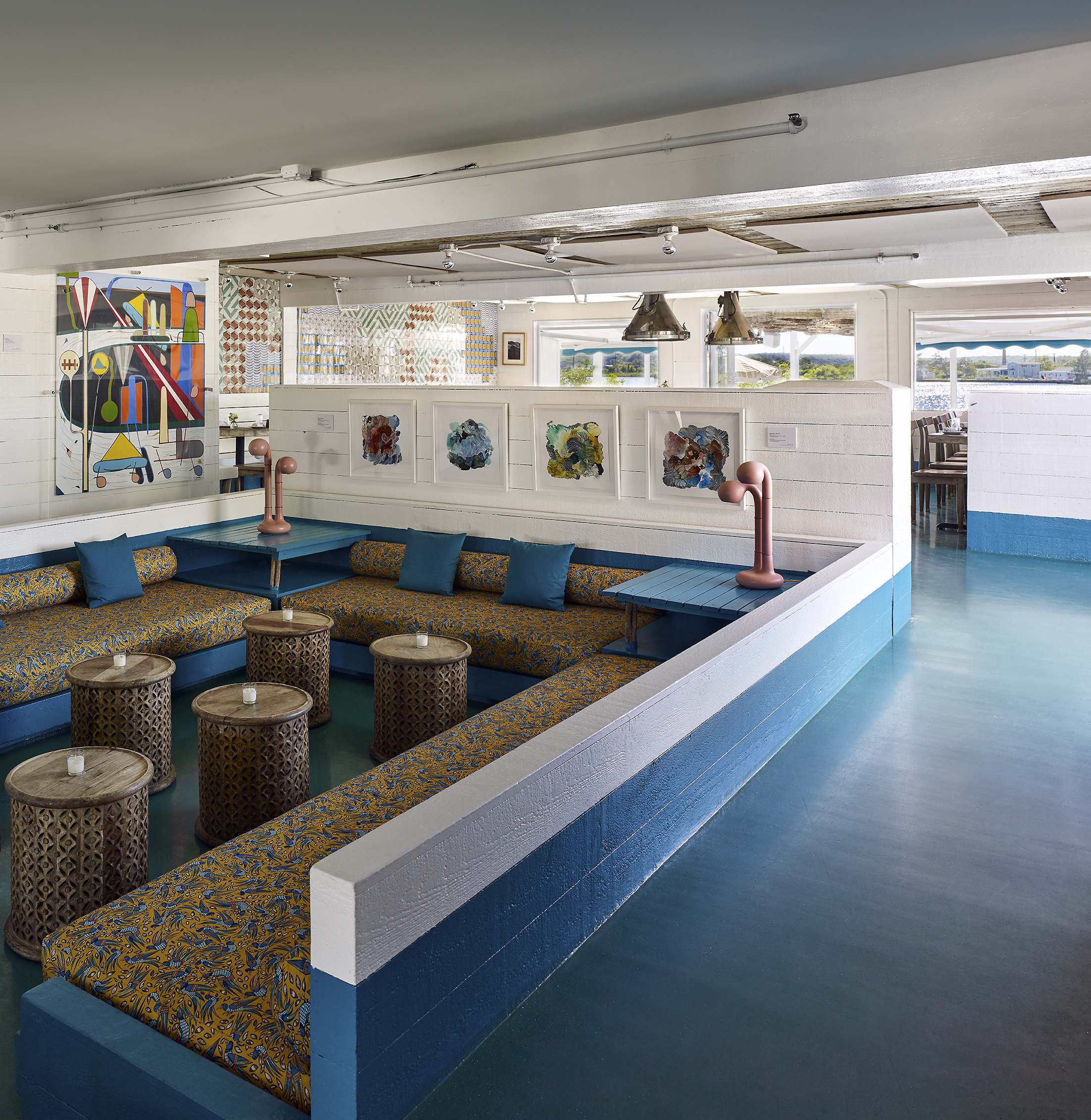
Courtesy of Brandon Boyd and Moonlight Arts Collective.
WW: Absolutely. Art has the ability to encapsulate so much, which is why it seems you’ve been successful in embracing the ability to be multi-faceted, and by creating a platform for others to do the same. Was that your idea for Moonlight Arts Collective?
BB: You captured that beautifully because, yes, that’s the idea. I’ve found over the years that there are so many artists who are similar to me in that art hasn’t been one linear line. It’s not just a tree with a leaf at the top; it’s been a tree with countless branches, depending on how much water you’re giving which side of the tree. You can branch off exclusively to the right or to the left, but I’ve found that by giving it permission, it’ll branch off indefinitely in infinite different directions. It can almost be overwhelming at a certain point should you give yourself permission to be more creative in a generalized sense. I think one of the reasons is that our culture operates so aggressively with linearity. If you find something you’re good at, it’s like, “Do that one thing, double down, triple down, and only do that! That’s how you make money. That’s your career.”
But all of these people I’ve talked to over the years, they do the thing they’re good at, that they like or love to do, and then they get home and start drawing. Or they start painting. And then painting or drawing almost becomes a quiet escape from the career that they’ve made out of creativity. It’s so interesting to me that we’ve been accumulating these massive lists of other artists, and looking them up, and it’s like, “Wow, there are so many other people that express themselves this way too. Why don’t we see more of that work?” I would like to see more of that work. I would buy a print of their work, especially if you’re already a fan of their films.
Jim Carrey is a perfect example. I grew up loving his movies, and I think he’s a phenomenal actor, but it turns out he’s also this incredible artist, as well. He does these quick-flash comic book political satire cartoony-type things, but he also does these wild abstract works that are so weird and cool. And the actor Alia Shawkat from Arrested Development, who is such a cool actor and compelling personality, and then you see her paintings and they almost remind you of her. You could see them and not know that she had done them, and think, “This looks like something that came out of the brain of Alia Shawkat.”
We’re going to be focused on doing limited-edition hand-signed print series with other multidisciplinary artists, or people like myself, from music or television or standup comedy, or cinema—but they also paint—like Mark Mothersbaugh from the band Devo, then from film score, then from Yo Gabba Gabba! He has this incredible resume, and he’s an amazing painter. Those are the types of artists we’ll be focusing on.
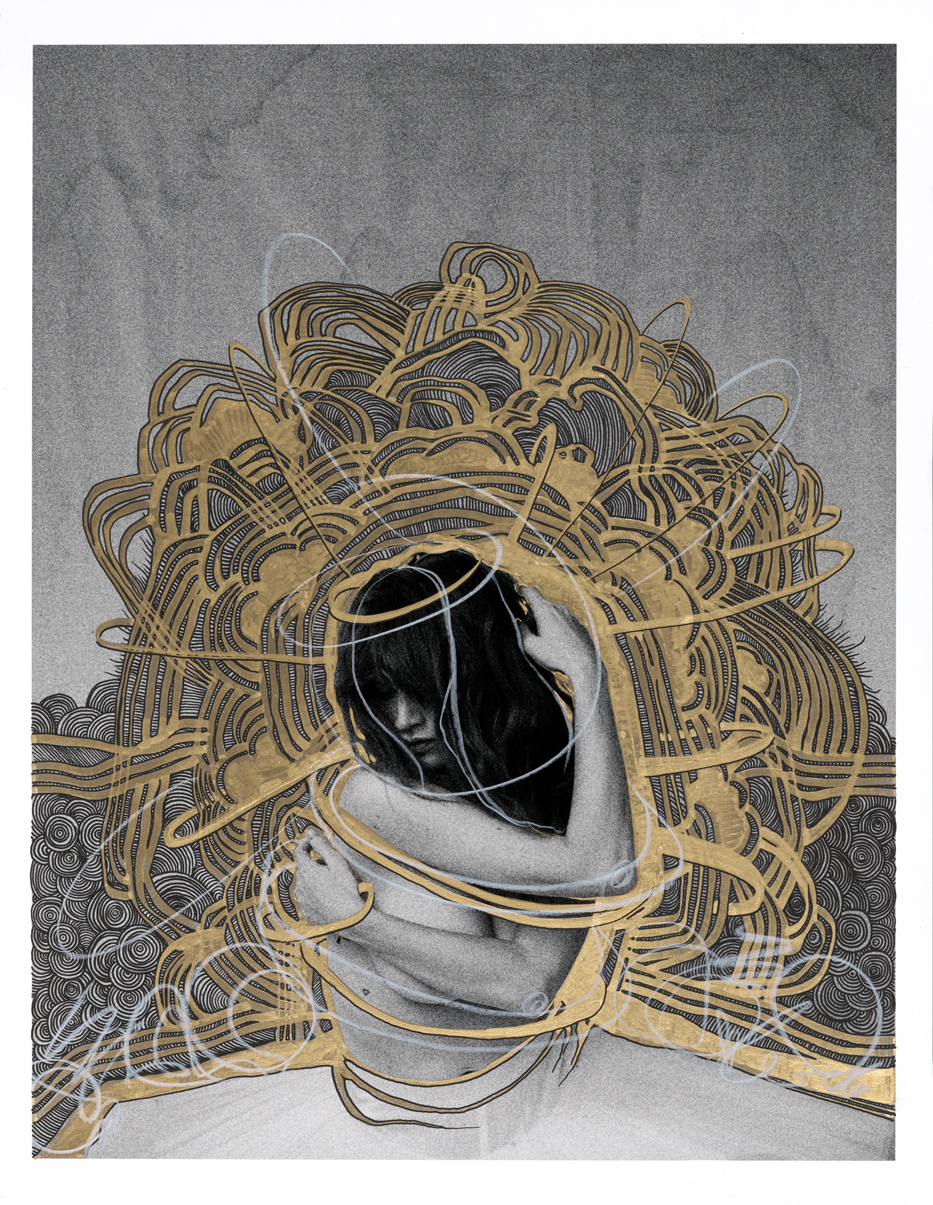
Courtesy of Brandon Boyd and Moonlight Arts Collective.
WW: During the past year amid the pandemic, through several compounded crises, many industries took a beating—including the art and the music worlds. How did this time impact your idea of the importance of creativity?
BB: I supposed it’s still evolving before us. There’s a general felt sense that the pandemic is winding down and in some people’s worlds, the pandemic might even be over. But I’m still in a place where I don’t feel it’s entirely over yet. There’s a feeling that there are many layers of obfuscation that were pulled out before my eyes. My general perception of so many things, the least of which was culture at large, are changing and evolving. It was a really difficult period of time, I think that goes without saying, but it was also from more of like a 20,000-foot perspective kind of fascinating to witness how collectively fragile we are. I haven’t landed yet.
The dust is still settling for me, so I’m still in a process of observation. If it weren’t for the devastating toll on our economy—and, on a personal level, we had tours planned and put out an EP in April, and everything sort of disappeared, and there was something really devastating about that—I’m really blessed to say that I didn’t lose any family members. A lot of people I know got Covid, and luckily pulled through, a handful of people I knew got Covid and got really, really sick, and we were worried about certain people in moments in time.
I locked down here in California with my girlfriend and our dogs. I wrote music and painted, and I tried to make the best of the situation, and I honestly have never felt more gratitude in my life for just the sheer fact that I was able to lock down and do it in relative comfort. There was a little bit of a survivor skill, when I think about it, that most people didn’t have an opportunity to do that. And there’s something devastating about that. That’s what I mean about the inherent cultural fragility. It turns out there we are all extremely interconnected, and when something this big happens and one part of that collective chain in our culture fails, the whole thing stops. It’s been a complicated time.
All that being said, it was definitely a really interesting and inspiring time to be an artist. I wrote a record while we were here at home and recorded it, and it’s a dark record. But to me, it is very descriptive of my experience being here. It’s as if we went into a cocoon.
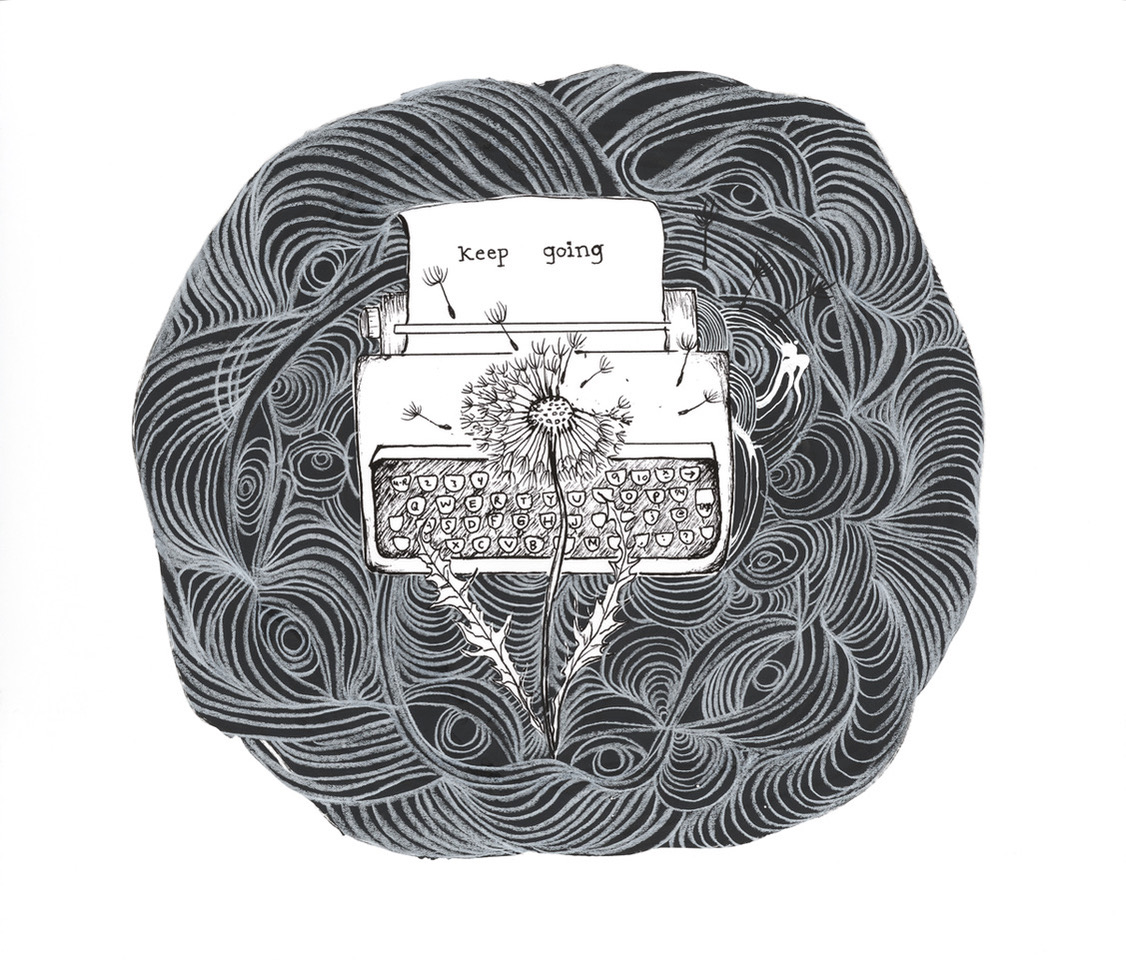
Artwork by Melissa Villaseñor and Brandon Boyd, courtesy of Brandon Boyd and Moonlight Arts Collective.
WW: Can you describe this record and the feelings and emotions that you tried to communicate?
BB: I have been writing here at home, and I desperately wanted to make an Incubus record, but everybody’s priorities are different. We’re all in our mid-40s, and two of the guys in the band have kids, and everyone was very much locked down for the first nine or ten months of this thing, so it wasn’t like we could get together in the band room. I suppose we could have, but we chose to take the lockdown very seriously. So I was just writing here alone, and my girlfriend have this ritual we do when we’re home together and that’s having tea every afternoon, early evening, sometimes in silence and have a sort of meditation together, but most of the time we listen to music and show each other new music we’ve discovered—old, new, whatever. So, during that process, she was playing some stuff for me and I was so impressed by this one record that I was compelled to look up who had produced it. It was this cat named John Congleton, so I just…cold-called him. [Laughs]
I basically just reached out to him and said, “Hey, what are you doing?” And he was like, “Working on a couple records, but not much. What are you doing?” And I said, “I wanna make a record! Wanna make a record?” And as a result of that cold call, we emailed back and forth song ideas for about six months. He and I made this record together—he produced it and we both wrote it together—called Echoes and Cocoons. I suppose the best way to describe it is it was written in lockdown and, I’m trying to be objective about it, but it’s a little dark, definitely had a lot of longing in it. It’s observing some of those inherent cultural fragilities that I was describing before. We just worked out a distribution admin deal for it, so the first singles will be coming out in the next few weeks.
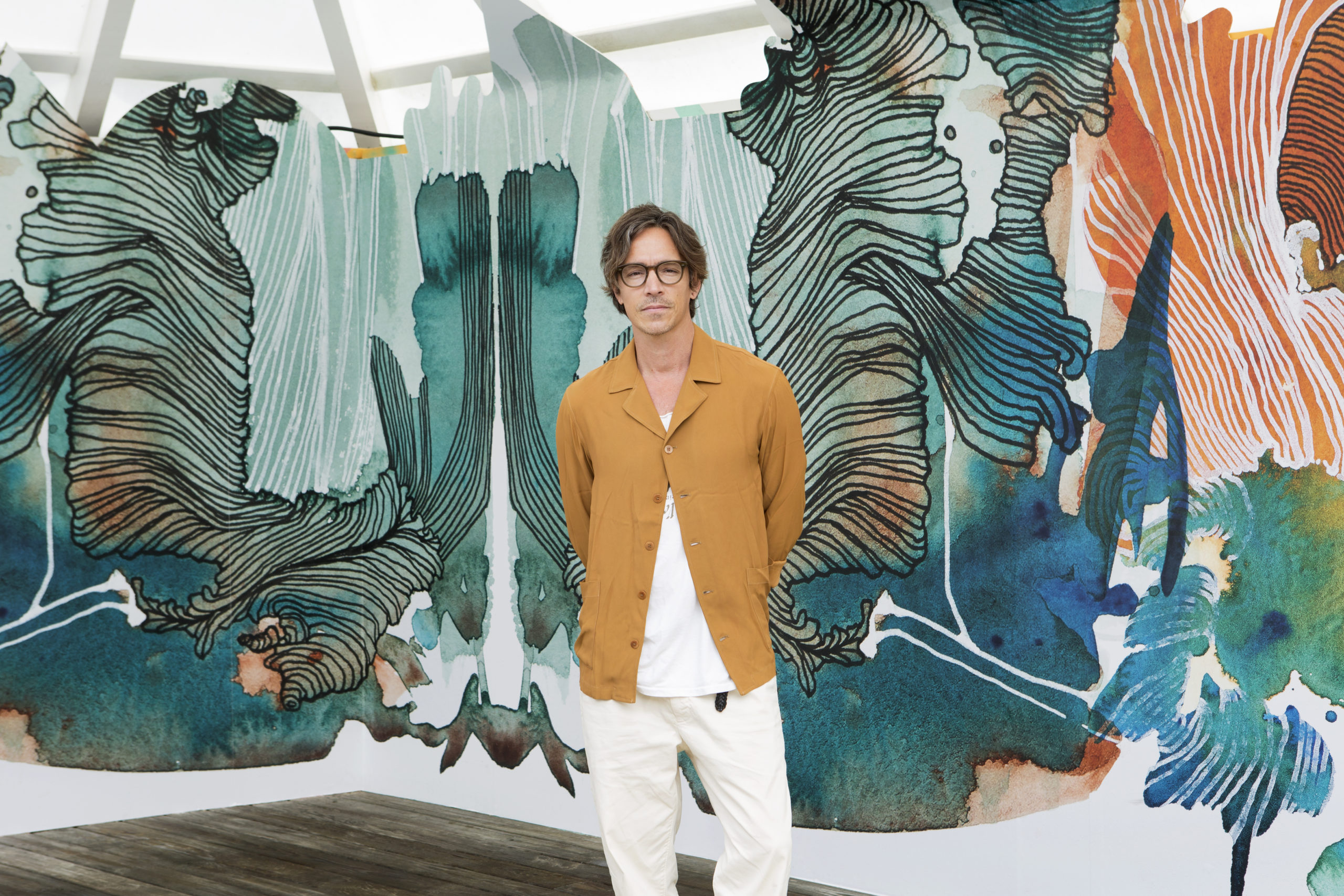
Courtesy of Brandon Boyd and Moonlight Arts Collective.
WW: I guess we’ll get a glimpse at how you felt when the EP comes out. You’re also going on tour this fall. What can the Incubus fans expect?
BB: It would be safe to expect five guys who are chomping at the bit to play music. [Laughs] Everybody was clambering at the gate to get moving, but we just had our first real rehearsal in our band room yesterday. We’re all very rusty, just because it’s been quite a long time since we were in a room together. It was so much fun to make noise and fuck around. We played a bunch of our stuff, but we also played other people’s songs, and just had a wonderful time. We’re just going to be doing what we do as far as the tour.
It’s a small handful of dates and we did that by design. We decided to do a handful of shows this year, including Bonnaroo, and then book some headlining dates around that. But we are pointing toward this time next year being on an actual tour, and stopping in everyone’s tour and playing sick. Being on tour all the time has its downfalls, but we’ve figured out a pace after doing it for decades that’s fun and doable for us. We create it like a work week, and play four to five nights a week, and have two days off for a little recovery. But it’s what we know best, so even when we’re on planes and busses and being shuffled around all over the place, the moment we actually get on stage, and we plug in and we get to do what we’re there to do, we don’t feel exhausted anymore. It’s an amazing thing.






